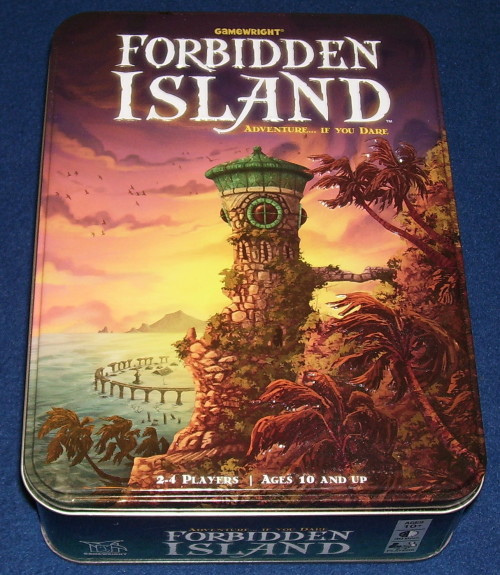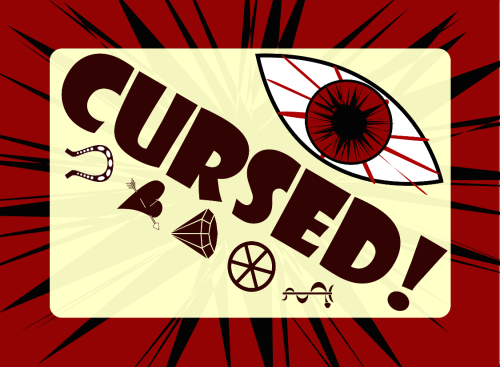Forbidden Island rates a Scorpion Bowl

Forbidden Island, designed by Matt Leacock of Pandemic fame, is the first purely cooperative game we have tried out. The first pass went very easily, even though we started on one of the more difficult levels, and we wondered if maybe it was targeted more at kids than adults. Afterwards, I realized we were doing it wrong. Turns out, following the rules actually has a big impact on how you perceive a game. Who knew?
Basic Gameplay
You’re a bunch of crazy archaeologists who have decided to go treasure hunting on a sinking island and won’t leave without all four treasures, even if that means everyone dies. Don’t worry, it’ll be fun.
Each player controls one character on the board, which is made of randomly laid tiles. At the end of each turn, some of those tiles will flood or sink (determined by draws from a deck). Every once in a while, someone will draw a card that says the water level rises, which means more tiles get drawn each turn and the tile cards that have already been drawn are shuffled and put back on the TOP of the deck to be drawn again real soon (that TOP part is crucial to making the game challenging). If any of the four treasures sink before they have been claimed, you lose. If all the players drown, you lose. If the water level rises above everyone’s heads, you lose. If the helicopter pad sinks before you escape, you lose. You get the idea?
Pure Cooperation
There are lots of types of games where players do not compete head-to-head and even more where there are only limited direct interactions. Many deck builders and euro-games work this way. I’ve sometimes read them described as group solitaire, with each player trying to rack up the best score on their own and comparing against other players at the end. Forbidden Island is adamantly not this way. The players win or lose as a group without any first-among-equals status to identify a winner or leader among the players. There are no hidden agendas or points or secondary objectives. It’s all or nothing.
For this to work well, the game itself must be the players’ only foil. I was doubtful at first that you could pull this off without any agency on behalf of the game, but Leacock’s tile and card system works well when you actually follow all the instructions. There is a simple mechanism for determining starting difficulty (how many tiles get flooded at the end of each turn when you start; the number steadily increases as the game goes forward) and the controlled randomness of the tile deck is fiendish.
Can you win?
A game like this is in danger of quickly losing its appeal if the players can figure out a winning strategy, since the game cannot adapt. I still found it enjoyable after half a dozen plays through, but even though we didn’t always win, it did feel a bit stagnant towards the end. Yes, you can increase the difficulty level by starting with a higher water level, but that makes it harder without making it any different. You do have a different island layout each time, due to the randomly shuffled tiles, but that only takes the game so far. A game like Betrayal at the House on the Hill never gets old because “the game” is given agency by the Traitor halfway through. Even if everyone knows the rules, the Traitor can play them differently each time. Not so with Forbidden Island, though from the looks of things, Leacock may have addressed some of those issues in the follow-on Forbidden Desert by adding more variety to the ways in which the game acts against the players.
Beer Rating
Forbidden Island is a scorpion bowl from your favorite inauthentic Asian restaurant. You certainly can finish it by yourself, but it is better with friends.

Leave a Reply